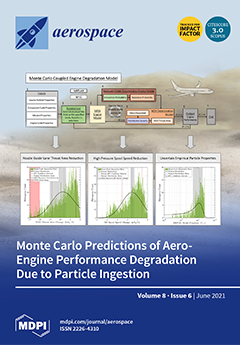Open AccessArticle
From the Martian Surface to Its Low Orbit in a Reusable Single-Stage Vehicle—Charon
by
Jérémie Gaffarel, Afrasiab Kadhum, Mohammad Fazaeli, Dimitrios Apostolidis, Menno Berger, Lukas Ciunaitis, Wieger Helsdingen, Lasse Landergren, Mateusz Lentner, Jonathan Neeser, Luca Trotta and Marc Naeije
Viewed by 6325
Abstract
With Mars colonisation becoming a reality for the near future, it is of importance to analyse how crew and cargo can be transported between Earth and a colony on Mars. This article is a feasibility and design study of a launch vehicle whose
[...] Read more.
With Mars colonisation becoming a reality for the near future, it is of importance to analyse how crew and cargo can be transported between Earth and a colony on Mars. This article is a feasibility and design study of a launch vehicle whose mission is to shuttle crew and cargo from Low Mars Orbit to a colony on the Martian surface. A single-stage reusable rocket has been selected to fulfil this mission, code-named Charon. The mission profile of such a vehicle was created, leading to a Maximum Growth Allowance (MGA) Delta-V budget of 6.2 km/s. With the mission profile in mind, each subsystem underwent a preliminary design. With reliability and maintainability in mind, subsystems were designed for redundancy and modularity, and an abort system was included for an added level of safety. The iterative design process resulted in a vehicle with a MGA mass of 198.7 tons, capable of transporting 1200 kg of cargo and a crew of 6 people to a 500 km orbit and back. The preliminary design of the vehicle is deemed safe. Following a fault tree analysis, the Single Launch Loss of Mission, Vehicle and Crew (SL-LOM, SL-LOV, SL-LOC) probabilities are computed to be of 0.975%, 0.12%, and 0.079%. Finally, from the vehicle’s constraints on the base, the feasibility of the project has been reflected upon. It is deemed that such a concept is of high interest only when the base is already operational, due to the launch and maintenance infrastructure that it requires, as well as the power it requires from the Martian base.
Full article
►▼
Show Figures





